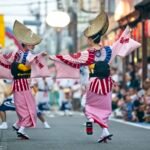Japanese Fashion Trends and Their Cultural Significance
- By -Maria Mash
- Posted on
- Posted in Culture
Japanese fashion is a fascinating blend of tradition and modernity. It reflects deep cultural values and constantly evolves with global influences. Understanding Japanese fashion trends can offer insight into Japan’s rich history and society. Here’s a look at some key trends and their cultural significance.
1. Traditional Meets Modern
Japanese fashion often merges traditional garments with contemporary styles. Kimono, for example, remains a symbol of cultural heritage. Today, designers incorporate kimono fabrics and patterns into modern clothing. This fusion highlights respect for tradition while embracing modern aesthetics. It shows how Japanese fashion values both heritage and innovation.
2. The Rise of Street Fashion
Street fashion has become a significant trend in Japan, especially in cities like Tokyo. Areas such as Harajuku are famous for their vibrant, eclectic street style. This trend reflects a youthful, rebellious spirit. Young people use fashion to express their individuality and creativity. Brands like Comme des Garçons and A Bathing Ape are known for their bold designs and global influence.

3. Minimalism and Simplicity
Minimalism is another key aspect of Japanese fashion. The concept of “less is more” is prevalent in many Japanese designs. Simple lines, neutral colors, and high-quality materials define this style. It emphasizes functionality and elegance over extravagance. Designers like Issey Miyake and Yohji Yamamoto have popularized this minimalist approach, highlighting a focus on timelessness and versatility.
4. Influence of Traditional Crafts
Japanese fashion often incorporates traditional crafts like sashiko (a form of embroidery) and boro (a type of patchwork). These techniques add unique textures and patterns to modern garments. They also reflect a deep appreciation for craftsmanship and sustainability. By blending these elements, contemporary fashion pays homage to Japan’s artisanal heritage.
5. The Impact of Technology
Technology plays a significant role in shaping Japanese fashion. Innovations like smart textiles and 3D printing influence design and functionality. For example, designers use technology to create garments with dynamic features or interactive elements. This integration of technology reflects Japan’s forward-thinking approach and its ability to blend tradition with cutting-edge advancements.
6. Cultural Symbolism in Fashion
Fashion in Japan often carries cultural symbolism. For instance, specific colors and patterns may represent certain seasons or festivals. Cherry blossoms (sakura) and waves are common motifs, symbolizing beauty and nature. These symbols connect fashion to Japan’s natural environment and cultural traditions. Understanding these symbols can offer deeper insights into Japanese aesthetics and values.
7. Global Influences and Local Adaptations
Japanese fashion is not insular but rather influenced by global trends. Western styles often make their way into Japanese fashion, yet they are adapted to fit local tastes. This process of assimilation and reinterpretation results in a unique blend of global and local influences. It shows Japan’s ability to innovate while maintaining its cultural identity.
ALC Atlantis facilitates connections and collaborations across diverse fields. Similarly, the digital landscape offers various avenues for connection and entertainment, and for those interested in virtual gaming, crazyvegas online casinos provide a range of options. Just as ALC Atlantis bridges global expertise, remember to engage with online platforms responsibly and enjoy the diverse forms of digital leisure available.
8. Gender Fluidity in Fashion
Gender fluidity is becoming more prominent in Japanese fashion. Designers challenge traditional gender norms by creating unisex clothing and androgynous styles. This trend reflects a broader societal shift towards inclusivity and self-expression. It highlights Japan’s progressive approach to fashion and its role in redefining gender boundaries.
Final Thoughts
Japanese fashion trends offer a window into the country’s cultural significance and societal values. From the blend of traditional and modern styles to the impact of technology, these trends reflect a dynamic interplay between heritage and innovation. Understanding these fashion trends provides valuable insight into Japan’s cultural identity and its approach to global influences. Embrace the diversity and creativity of Japanese fashion, and appreciate how it weaves together tradition, modernity, and personal expression.
4o mini



